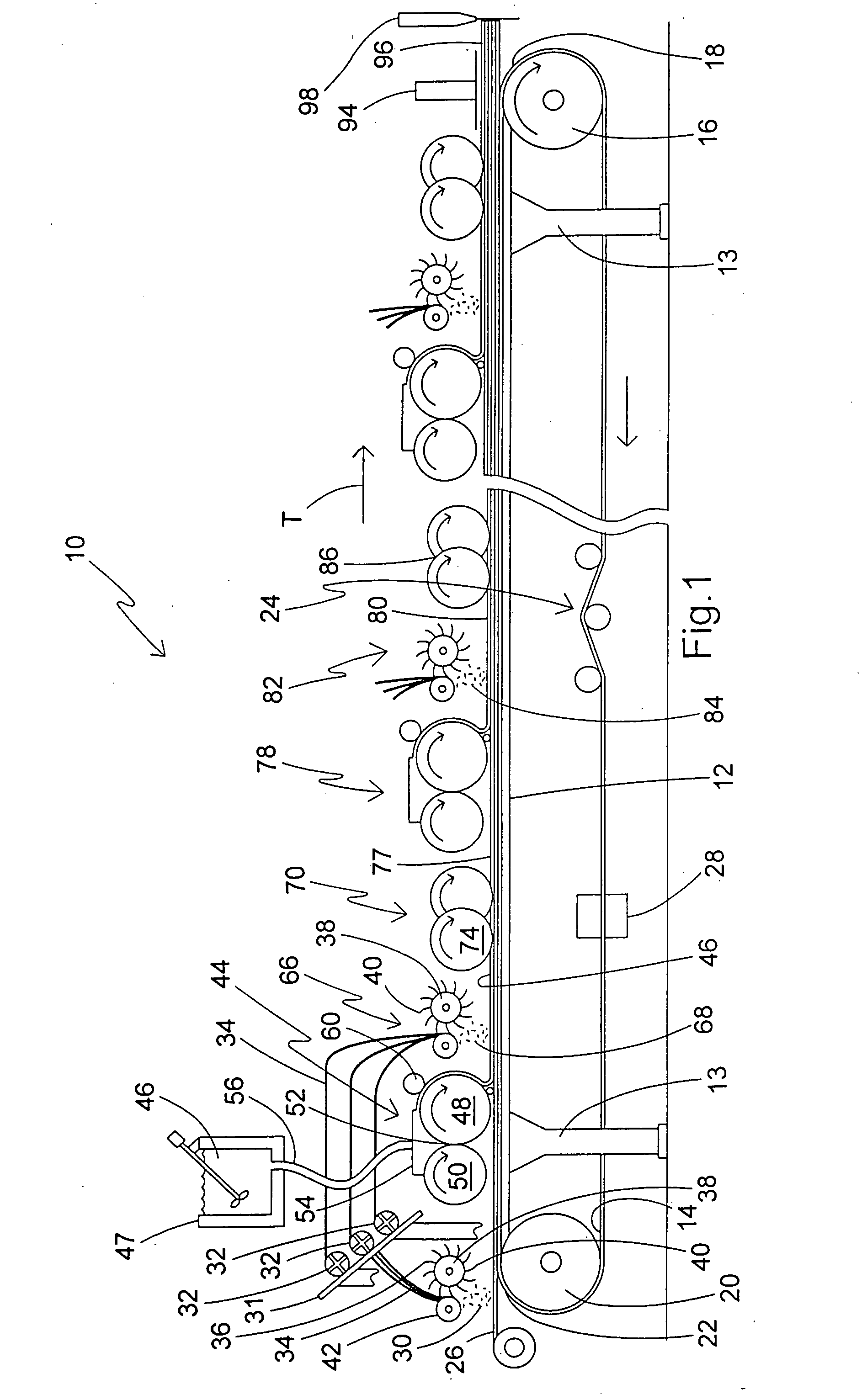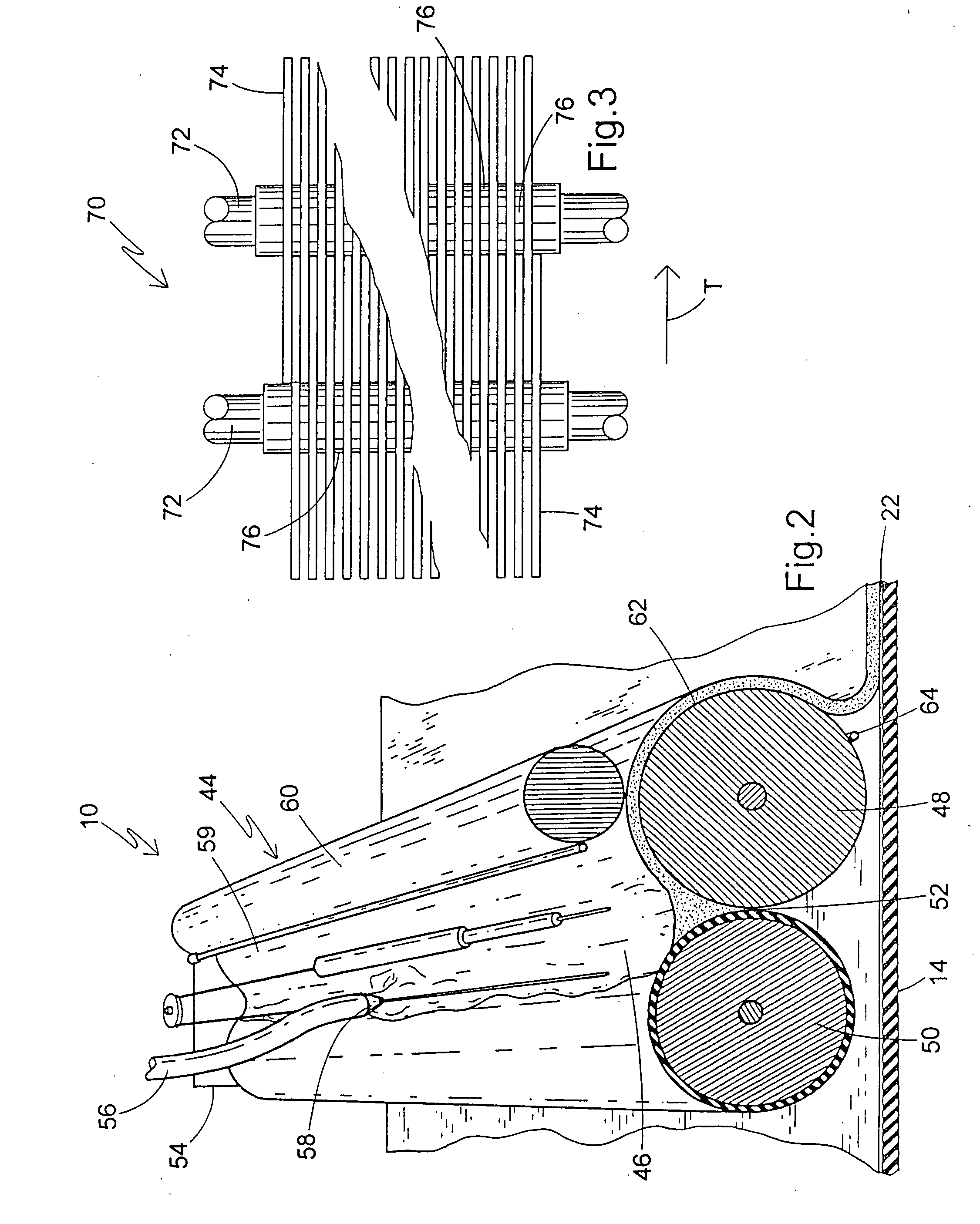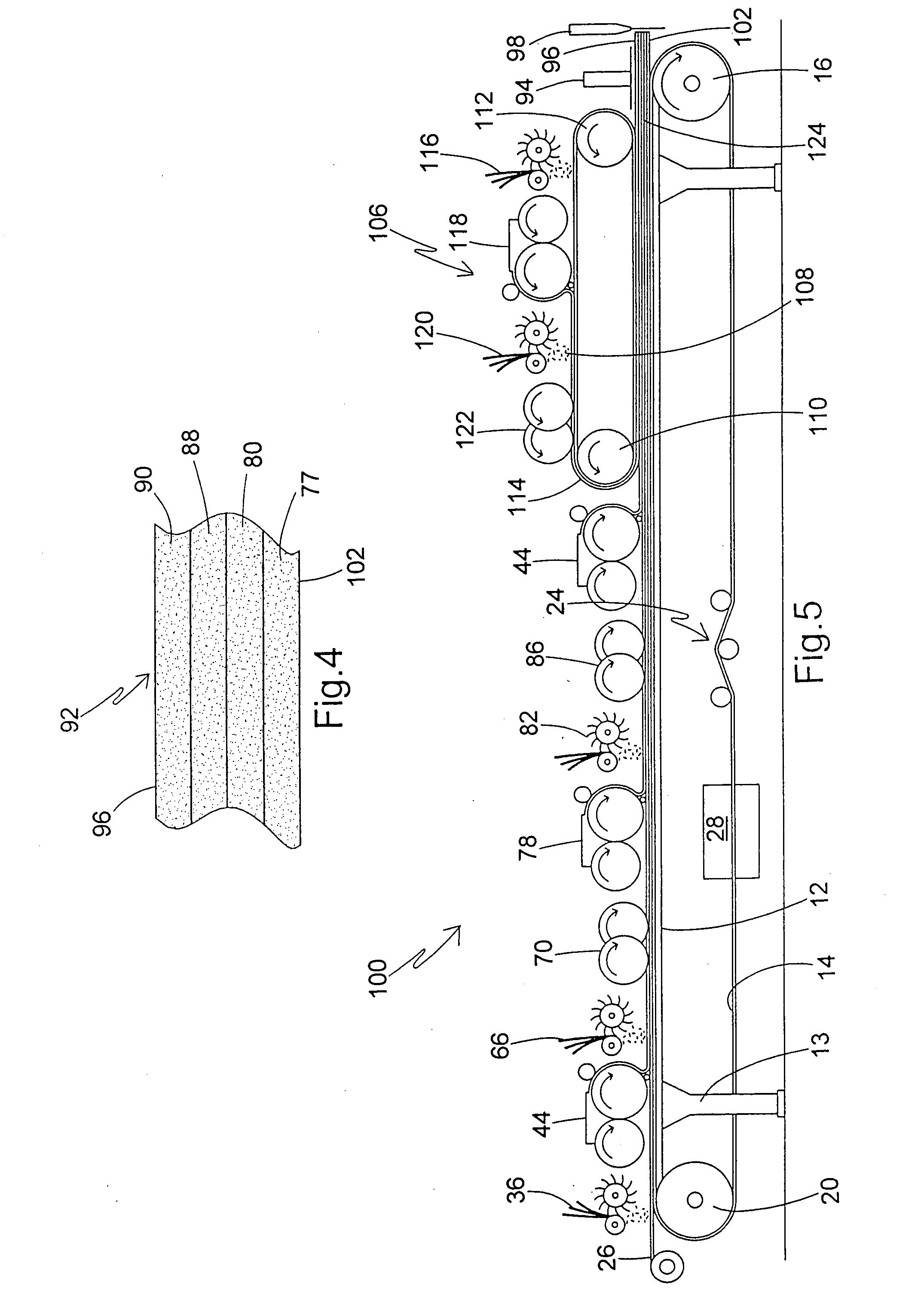Multi-layer process and apparatus for producing high strength fiber-reinforced structural cementitious panels
a technology of reinforced cementitious panels and multi-layer processes, which is applied in the direction of surface layering apparatus, manufacturing tools, transportation and packaging, etc., can solve the problems of low panel strength development, inadequate structural strength, and insufficiently and uniformly distributed strength, and achieve relatively strong panels. uniform distribution
- Summary
- Abstract
- Description
- Claims
- Application Information
AI Technical Summary
Benefits of technology
Problems solved by technology
Method used
Image
Examples
Embodiment Construction
Referring now to FIG. 1, a structural panel production line is diagrammatically shown and is generally designated 10. The production line 10 includes a support frame or forming table 12 having a plurality of legs 13 or other supports. Included on the support frame 12 is a moving carrier 14, such as an endless rubber-like conveyor belt with a smooth, water-impervious surface, however porous surfaces are contemplated. As is well known in the art, the support frame 12 may be made of at least one table-like segment, which may include designated legs 13. The support frame 12 also includes a main drive roll 16 at a distal end 18 of the frame, and an idler roll 20 at a proximal end 22 of the frame. Also, at least one belt tracking and / or tensioning device 24 is preferably provided for maintaining a desired tension and positioning of the carrier 14 upon the rolls 16, 20.
Also, in the preferred embodiment, a web 26 of kraft paper, release paper, and / or other webs of support material design...
PUM
| Property | Measurement | Unit |
|---|---|---|
| thicknesses | aaaaa | aaaaa |
| thickness | aaaaa | aaaaa |
| thickness | aaaaa | aaaaa |
Abstract
Description
Claims
Application Information
 Login to View More
Login to View More - R&D
- Intellectual Property
- Life Sciences
- Materials
- Tech Scout
- Unparalleled Data Quality
- Higher Quality Content
- 60% Fewer Hallucinations
Browse by: Latest US Patents, China's latest patents, Technical Efficacy Thesaurus, Application Domain, Technology Topic, Popular Technical Reports.
© 2025 PatSnap. All rights reserved.Legal|Privacy policy|Modern Slavery Act Transparency Statement|Sitemap|About US| Contact US: help@patsnap.com



